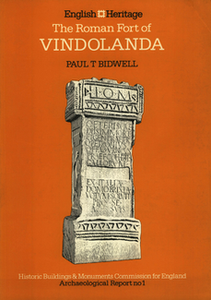English Heritage Archaeological Monographs
English Heritage, 2014. https://doi.org/10.5284/1028203. How to cite using this DOI
Data copyright © English Heritage unless otherwise stated
This work is licensed under the ADS Terms of Use and Access.
Primary contact
Historic England
The Engine House
Firefly Avenue
Swindon
SN2 2EH
Resource identifiers
- ADS Collection: 1416
- DOI:https://doi.org/10.5284/1028203
- How to cite using this DOI
The Roman Fort of Vindolanda at Chesterholm, Northumberland
Bidwell, P.
English Heritage (1983)
Abstract:

This work is principally an account of excavations carried out at Vindolanda in 1980 but also reviews the available evidence for the history of the fort and vicus. Early timber forts were succeeded by a stone fort in the Hadrianic period, perhaps in c.122-4. Reconstruction of some interior buildings were erected in the northern part of the praetentura; they are thought to have been houses accommodating a civilian work-force under military control. West of the fort lay a number of buildings apparently serving as a military annexe rather than civilian vicus. The fort was almost entirely rebuilt in c.223-5, retaining only parts of the original west and east walls. After a delay of about a decade, when part of the garrison was probably posted elsewhere, a double barrack-block was erected in the north-east corner of the fort, possibly to accommodate cavalry. The building underwent a number of alterations and remained in use until c.400. There are slight indications of activity on the site subsequent to that date. Rebuilding of the fort in c.223-5 was accompanied by construction of an extensive vicus which was largely abandoned by the last quarter of the third century. Foremost amongst the finds was a fragment of a military diploma issued to a soldier of cohors / Tungrorum. There were numerous objects of iron and copper alloy. A considerable quantity of pottery was recovered from a sequence of third- and fourth-century deposits. Coin finds from the fort and vicus are compared and their significance discussed.
Download monograph
| The Roman Fort of Vindolanda at Chesterholm, Northumberland, Bidwell, P., English Heritage (1983), ISBN: 9781848022171 | 83 Mb |





